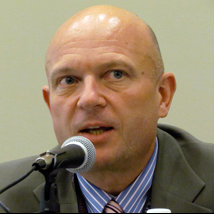Armed Conflict
Cybersecurity & Tech
Foreign Relations & International Law
Lawfare News
Surveillance & Privacy
Readings: Drones in Civilian Airspace
As drone aircraft become commonplace in civilian settings - everything from police surveillance to environmental groups tracking whaling vessels to hobbyists and much, much more - and as they become more varied in size and pretty much everything else, well, issues of airspace rapidly crop up. We tend to focus on the most controversial issues, such as privacy or the use of drones in targeted killing, but in civilian settings, the first and most common issue turns out to be air traffic control.
Published by The Lawfare Institute
in Cooperation With

As drone aircraft become commonplace in civilian settings - everything from police surveillance to environmental groups tracking whaling vessels to hobbyists and much, much more - and as they become more varied in size and pretty much everything else, well, issues of airspace rapidly crop up. We tend to focus on the most controversial issues, such as privacy or the use of drones in targeted killing, but in civilian settings, the first and most common issue turns out to be air traffic control. This column in an Economist blog discusses civilian uses of drones generally, but is most useful on seemingly mundane - until a drone accidentally crashes your plane - airspace issues. (Bonus - it quotes one of the best sources on drones and robots and all social and legal issues related thereto, Stanford Law School fellow Ryan Calo.) From the Economist (Babbage):
The Federal Aviation Administration (FAA), for instance, has issued some 285 temporary permits for testing UAVs in airspace where commercial air traffic and private aircraft operate. But because none of the UAVs intended for civilian use can yet comply with the FAA’s “sense and avoid” rules, a ground observer or chase aircraft has to keep the drone in sight at all times to act as its eyes. The FAA is working on regulations that will allow unmanned aircraft to operate routinely in public airspace without creating a hazard for other air traffic and people on the ground. The agency was due to issue its draft this January. Unfortunately, political squabbles in Congress delayed the FAA’s budget, and the agency had to shut its doors for a while. The forced furlough has meant the new regulations will not be available until spring. One technical issue the FAA has been addressing is how a UAV should respond if it loses its communications link with the operator on the ground. Should it automatically return to some pre-assigned GPS location, or head for the nearest open space? Should it have a parachute arrangement—like an increasing number of private planes—to lower it gently to the ground in an emergency, or should it put itself immediately into a stall? Plenty of practical solutions exist for such problems. The only issue is cost. A bigger stumbling block is how UAVs should detect, sense and avoid other aircraft operating in the same airspace. What bothers the FAA is that drones piloted remotely by operators on the ground cannot see other aircraft in the sky in the way that human pilots can. Before giving the go-ahead, the agency wants UAVs to be able to operate as safely as manned aircraft. That means developing a lot of expensive gear to avoid mid-air collisions and near misses.
Kenneth Anderson is a professor at Washington College of Law, American University; a visiting fellow of the Hoover Institution; and a non-resident senior fellow of the Brookings Institution. He writes on international law, the laws of war, weapons and technology, and national security; his most recent book, with Benjamin Wittes, is "Speaking the Law: The Obama Administration's Addresses on National Security Law."


